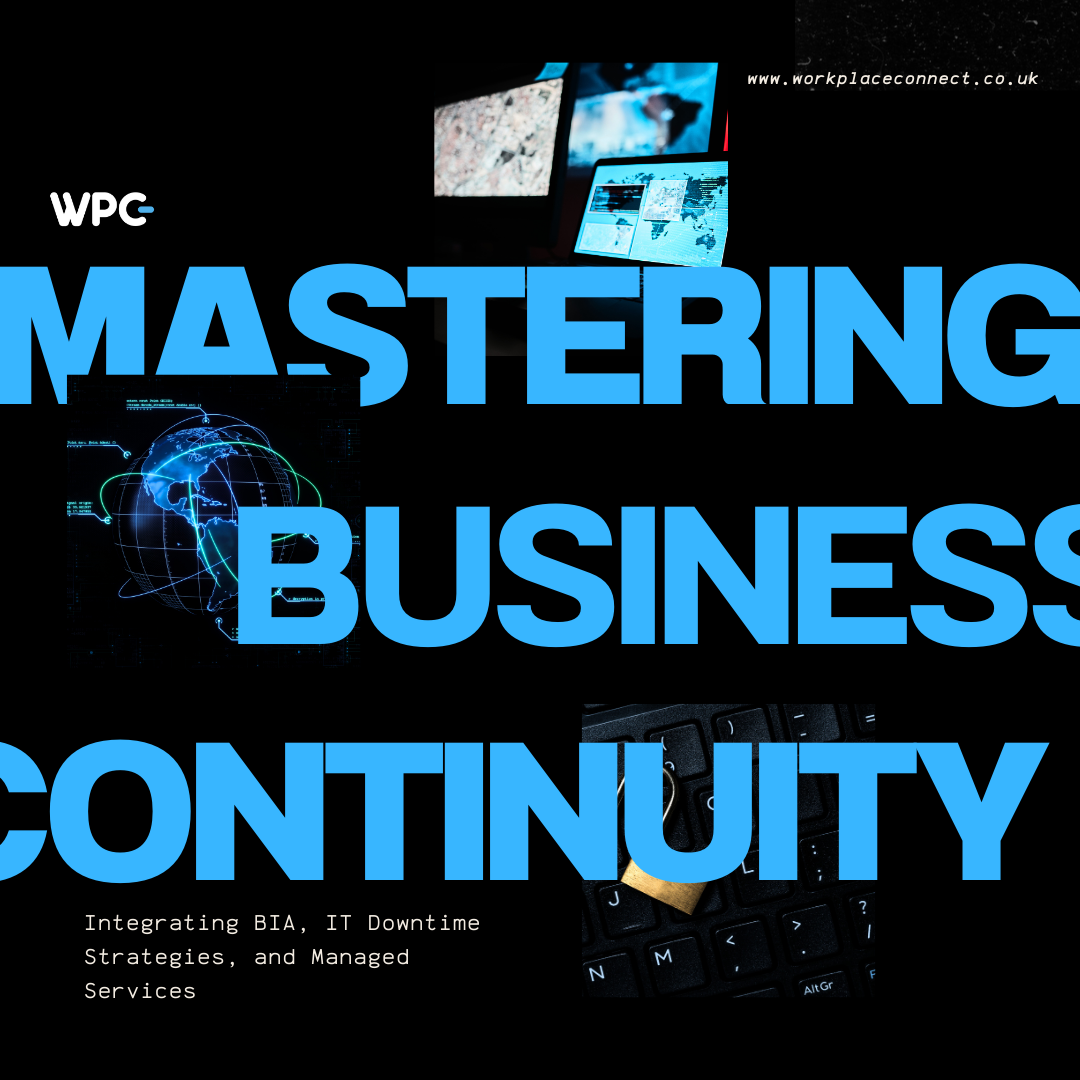Business impact analysis (BIA)
A business impact analysis assists in estimating the possible consequences of a disaster, accident, or emergency stopping vital business operations. A business impact analysis (BIA) is primarily used to identify important functions, evaluate the possible effects of various disruptions on these services, and establish acceptable levels of downtime and data loss. Based on the significance of different company functions and their prerequisites for returning to regular operations, the BIA assists in prioritising resources and recovery plans.
Step 1: Initiate the BIA Process
- Objective Definition: Clearly define the objectives of the BIA.
- Project Scope: Establish the services, departments, and functions that will be included in the BIA by determining its scope.
- Engaging Stakeholders: Assist Executive Leadership, IT, legal, and other departments in identifying and involving important stakeholders.
Step 2: Gather Information
- Data Collection: Create data gathering techniques, such as questionnaires, interviews, and document evaluations, to acquire the information required for different business operations.
- Documentation Review: To comprehend present capabilities and recovery methods, review current policies, process papers, and continuity plans.
Step 3: Identify Critical Business Functions
- Function Identification: Enumerate every procedure and business function that the company runs.
- Criticality Assessment: Evaluate each function’s criticality using factors such as the effect on finances, legal requirements, client service, and reputation.
Step 4: Assess Impact Over Time
- Impact Scenarios: Make several disruption scenarios (such as a cyberattack, a natural disaster, or a technological malfunction) and examine the effects of each one over a given period of time (a week, 48 hours, or 24 hours, for example).
- Qualitative and Quantitative Measures: To evaluate impact, use both qualitative descriptions and quantitative metrics (financial loss, effect on client interactions, etc.).
Step 5: Determine Recovery Priorities
- Recovery Time Objectives (RTO): Establish the longest period of time that a disruption to a crucial function is tolerable.
- Recovery Point Objectives (RPO): Establish the maximum duration of data loss that can be tolerated during an interruption (important for data-driven functions).
Step 6: Develop Recovery Strategies
- Strategy Identification: Determine appropriate recovery procedures for each important function based on the RTOs and RPOs.
- Resource Requirements: Enumerate the facilities, people, and technology needed to put these initiatives into practise.
Step 7: Document the BIA
BIA Report: Combine the results into an extensive BIA report that include the following:
- Examination of important roles and their effects.
- Suggested tactics and priorities for recuperation.
- Suggestions for enhancing adaptability and minimising possible effects.
Step 8: Review and Update Regularly
- Review Schedule: Create a systematic review cycle for the BIA to guarantee that it is up to date and correct.
- Update Mechanisms: Establish procedures for upgrading the BIA in response to emerging technologies, modifications in the business environment, or after a real occurrence.
Strategies to Minimise IT Downtime
The operational efficiency of legal companies is contingent upon the implementation of efficient measures aimed at minimising IT downtime. This section provides law firms with useful strategies to lessen the impact and frequency of IT disruptions.
Preventive Measures
- Regular Updates and Patch Management: Make sure that the most recent patches are applied to all software, including operating systems and apps. This lessens the vulnerabilities that cyber attackers might take advantage of.
- Robust Cybersecurity Practises: To protect sensitive data, put in place extensive cybersecurity measures such as intrusion detection systems, firewalls, antivirus software, and encryption techniques.
- Hardware Maintenance: To avoid malfunctions, schedule routine maintenance and inspections for any important hardware. In order to replace outdated equipment before it breaks, think about putting in place a hardware lifecycle management plan.
- Data Backup Solutions: Create automated, routine backups of all important data and evaluate recovery procedures to make sure that, in the event of data loss, information can be efficiently restored.
- Employee Training: To reduce the possibility of human error-related downtime, regularly provide cybersecurity awareness and IT best practises training to all staff members.
Disaster Recovery Planning
- Disaster Recovery Plan (DRP): Create a thorough DRP with specific instructions on how to retrieve data and IT systems following a disaster. The strategy must to be in line with the BIA’s recovery time objectives (RTOs) and recovery point objectives (RPOs).
- Offsite Storage and Redundancy: To ensure that data is replicated in a geographically diversified location and is protected from site-specific disasters, make use of cloud solutions or offsite data storage.
- Failover Systems: Use failover techniques to reduce downtime, such as redundant servers or cloud services that can take over immediately in the event of a system breakdown.
Monitoring and Alerts
- System Monitoring: Install monitoring technologies that can send out notifications in real time regarding the condition of IT systems. This makes it possible for IT staff to react swiftly to possible problems before they create serious interruptions.
- Performance Benchmarks: Review system performance on a regular basis against predetermined benchmarks to spot possible problems early and make necessary capacity adjustments.
Vendor Management
- Service Level Agreements (SLAs): With all IT vendors and service providers, clearly define service level agreements (SLAs) that include uptime guarantees and issue resolution turnaround timeframes.
- Vendor Selection: Select suppliers who have a strong track record of dependability and support, particularly for vital IT infrastructure and services.
Leveraging Managed IT Services
Many law firms use managed IT services as a strategic way to improve their IT infrastructure, lower downtime, and stay in compliance with industry norms. This section examines the ways which professional management and assistance offered by managed IT services can specifically help legal practises.
Role of Managed IT Services
- Proactive Management: Proactive monitoring and maintenance of IT systems are provided by managed IT services, which aid in spotting and fixing possible problems before they become major issues that result in downtime.
- Expertise and Specialisation: The specialist knowledge that managed IT service providers usually bring to the table could be too expensive for a law firm to obtain itself. This covers the most recent technological developments, adherence to legal requirements, and sophisticated cybersecurity safeguards.
Benefits of Outsourcing IT Management
- Cost Efficiency: Compared to keeping a full-fledged in-house IT department, legal companies can benefit from lower total IT expenditures by utilising the economies of scale and specialised knowledge of managed service providers.
- Enhanced Security: Robust security processes, such as frequent upgrades, threat monitoring, and reaction tactics, are the specialty of managed IT services and are essential for safeguarding confidential legal data.
- Compliance Assurance: Managed service providers may guarantee that a firm’s IT processes conform with legal standards, thereby avoiding potential legal penalties, thanks to their expertise in the regulatory requirements specific to the legal business.
- Scalability: According to the demands of the business, managed services can be quickly scaled up or down, enabling expansion without requiring a sizable additional investment in IT infrastructure.
Empower Your Practise with Strategic IT Management
Don’t allow IT uncertainties take away from the main goal of your company. Make an appointment for a call with us right now to start the process of securing and improving your IT operations. Let us assist you in transforming your IT systems into a solid foundation that underpins the success of your company.







